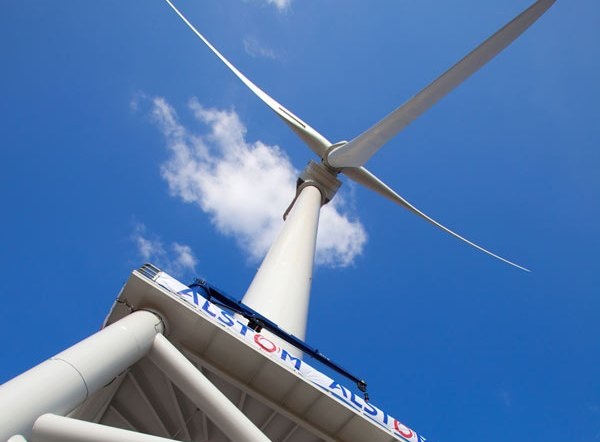The drive toward larger offshore wind turbines seems to have slowed a bit in the past year, what with the overwhelmingly European-centered industry working through a bit of a rough patch. But here’s a sign it will pick up again: GE on Thursday said that it struck a deal with a Danish wind test center to build a facility that will allow for the testing of turbine nacelles that put out up to 10 megawatts.
Turbines for offshore wind power have inched up in size and output. Turbines of 3.6 MW or so are standard; 5 MW machine are becoming pretty common; and Siemens has a deal to supply DONG Energy with 300 6-MW turbines between 2014 and 2017 (Alstom began testing a 6 MW model last year, as well). Last October, too, Vestas said it was boosting the output on its V164, which is due to begin testing in 2014, from 7 MW to 8 MW.

But 10 MW? A couple of companies have talked up plans to build such behemoths, but according to a North American Windpower report in January, “they have encountered obstacles in bringing these high-capacity turbines to scale. For instance, the turbines’ larger size and heavier weight drive up production costs, as well as present logistical challenges.”
Still, most observers believe that eventually the industry will figure out a way to break into double figures on output, and when it gets there, the Lindoe Offshore Renewables Center wants to be the place where those machines are put through their paces.
The industry-backed LORC was founded in 2009. It’s located on the east side of Denmark on the main sailing route between the North Sea and the Baltic Sea, and in addition to a testing and demonstration facility for full-sized wind turbine nacelles (called Lindoe Nacelle Testing), it’s also building a welding center focused on new production methods that can reduce material and energy costs (Lindoe Welding Technology), and working on facilities for mechanical tests and tests of foundations (Lindoe Foundation Testing).
GE laid out the goal with its project there:
The new nacelle tester will enable LORC to test the functionality and performance of wind turbine nacelles by using a specially designed adapter that enables the turbine hub and all field operational software and hardware – including pitch control – to be included in the test. It will open up a wide range of opportunities to test wind turbine controllers inside the nacelle, using highly realistic test conditions at 33 kV level, which is unique in the test system business.
Ultimately, the point here is to bring down the cost of offshore wind power, which has trended roughly twice as expensive as onshore wind. Offshore is seen as a better option in the long run than land-based wind for the production of huge amounts of energy for a couple of main reasons — the resource is superior and the conflicts are fewer. True, bigger turbines can be more expensive per megawatt, but with bigger turbines fewer would need to be installed – and that could save on the hefty cost of installation and operation and maintenance.